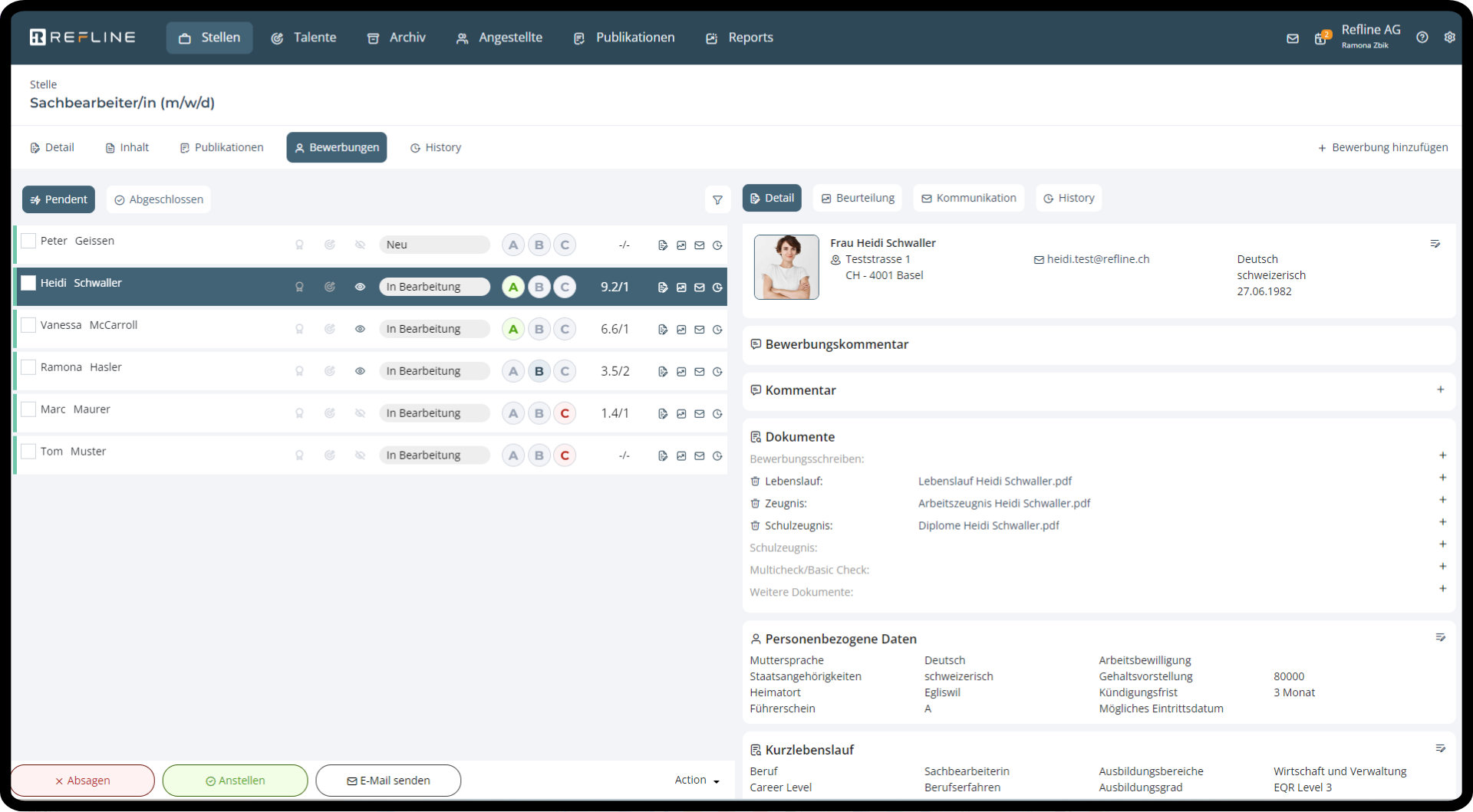Modern recruiting processes are complex: multiple open positions, various communication channels, and high expectations from applicants can quickly push your limits. An Applicant Tracking System (ATS) helps you tackle exactly that. It digitizes the entire hiring process, centralizes key workflows, and ensures that every step – from sourcing to final decision – remains structured, traceable, and scalable.
What is an ATS?
An applicant tracking system helps manage the full lifecycle of recruiting: publishing job postings, managing applications, organizing interviews, and tracking hiring progress. It also enables structured communication within the HR team and with hiring managers. At the same time, an ATS ensures that application documents are securely stored, centralized, and easy to access – even when several people are involved in the decision-making process. This improves internal workflows, avoids mistakes, and creates transparency.
Benefits of a centralized recruiting process
One of the biggest advantages of a centralized recruiting system is the time it saves. When all processes – from job posting to candidate communication – are handled in one place, HR teams no longer have to switch between tools, manually update spreadsheets, or search through inboxes. Routine tasks like confirmation emails, scheduling interviews, or sharing feedback can be automated, which significantly reduces the administrative workload. The result: more time for personal interaction with candidates and for strategic initiatives that really move the organization forward.
Advantages of an ATS at a glance
A modern applicant tracking system combines efficiency, compliance, and user experience – and delivers clear advantages across all recruiting stages:
- Time savings: Automating routine tasks and managing everything in one place reduces administrative workload.
- Cost efficiency: By identifying the most effective channels, companies avoid wasting budget on low-performing sources.
- Faster time-to-hire: With a more efficient process, candidates can be onboarded more quickly – supporting productivity and growth.
- Better candidate experience: Automated updates and transparent steps create a smoother journey for applicants.
- Data privacy: All communication and documentation can be made 100% GDPR-compliant.

Beyond efficiency: laying the foundation for strategic HR
An ATS doesn't just optimize day-to-day tasks – it also builds the groundwork for long-term recruiting success. By collecting data consistently, it enables meaningful reporting and continuous improvement. Features such as integrated talent pools help companies stay in touch with promising candidates, even beyond a specific vacancy. And by providing a structured, professional experience for applicants, your company strengthens its employer brand – making it easier to attract top talent in the future.
Is an ATS the right solution for your company?
Whether you recruit regularly in a larger company or only fill positions occasionally in a small business – a good applicant tracking system will deliver clear benefits either way. You’ll save a significant amount of time and reach the right candidates more effectively. Modern solutions like the Refline system are modular and scalable, so you only use the features that fit your needs. And even if you handle just a few applications a year, you’ll benefit from more structure, better oversight, less manual work, and a more professional presence.
Looking for structure in your hiring process? Try out Refline’s applicant tracking system and experience how efficient, centralized recruiting can transform your HR workflows.